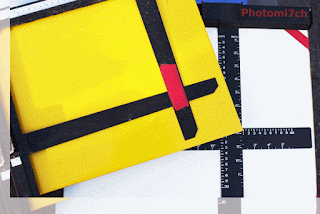 |
Test stips at twenty and ten
Minutes |
The
results are in! This
has turned out to be one of the most exasperating tests to date. There have
been problems all along the way from getting the exposures right to developing
the film. Having said that there have been some surprises.
As with the
Agfa test the film was exposed at box speed ISO 100 in the Nikon F5. This is
where the process changes apart from the test method. The PMK Pyro used was one
I made from raw material that did not include EDTA disodium in the mix and a
reduced amount of Sodium Metaborate in solution B.
Sequence
of development:
●
Pre-soak
- it makes no
difference with this film. It is not prone to air bell/bubbles sticking to the
film.
●
Developer
- to be made up
immediately before use at 21 degrees C.
●
Development
times - for this
test were 5, 10, and 20 minutes respectively.
●
Tank
inversions - continuously
for the first minute and then once every fifteen seconds.
●
Stop, Fix and wash - as normal.
●
After
bath - was not used
and would have made little difference with this mix.
Notes:
Adox CHS 100
PET 35mm is not like other black and white film it has a noticeable thinner
film base which is coloured blue. The cassette this film came in was not light
tight which almost ruined the test. I only discovered this after the film had
been exposed, when removing the film from the cassette it fell to bits. I have
read a forum thread saying that the 120 roll film has the same problem. Adox
you need to up your game! It is appalling quality control.
 |
| Pre-soak water after use |
If you use a
pre-soak the water will come out blue.
The ten
minute development time is the one suggested by Digital truth, which made it
the reference time the other test strips were to be judged against.
Results
 |
| All the test strips including the one thats a no show. |
The test
strip to show the best density of negative is the twenty minute one, having
said that they are still a bit on the thin side. This does not take away from
the fact that they are fully toned and well defined. There is no sign of grain
when enlarged to 485 mm (19”) by 340 mm (13.5”). When printing the negatives I'm
having to use grade three, normally I would expect to be using grade two, this
could be due to the lack of EDTA in the mix of Pyro used. I'm also disappointed
that the five minute test strip shows no negatives at all, from previous
experience the shorter/half development times have a faint out line. In this
case I can only put it down to the faulty film cassette. The ten minute test
strip is very thin when compared to the Agfa test strips it is thinner than the
half development time. Which suggests that normal development in this case
should be greater than twenty minutes.
 |
| Over sized enlargment |
With all the
time and effort put into this test the last thing I was expecting was to be let
down by bad manufacture. Of the thirty six exposures on the film around
about ten frames are unaffected by some
light damage luckily the majority of these are from the test exposures that put
in an appearance. If there was going to be any question marks I was thinking it
would be from the developer but it did not disappoint, the only thing to note
was when i poured it from the developing tank it was a lovely pink rose colour.
Will I be
using the film again? Yes! only because I have a roll of 120 on the shelf if
the negatives show any light damage then I will not use it again. How can I say
that when I use a lot of out of date film? With out of date film at least you
know that the results could be iffy. You don't expect it from new in date
stock.
 |
| Used PMK Pyro. |
 The frames
come with two or four independently adjustable blades on a yellow or white base.
I have noticed that some blades are not set at right angles to each other so it
is a good idea to check them at various settings with a set square to make sure they
are true. Also make sure that the edges of the blades are not bevelled under.
This will reflect the light and produce a thin black line around the edge of
the picture. It can be a nice affect but one you should have control over. The
light colour of the baseboard is so you can see the projected negative,
enabling you to frame the image before you put the photo paper in place.
The frames
come with two or four independently adjustable blades on a yellow or white base.
I have noticed that some blades are not set at right angles to each other so it
is a good idea to check them at various settings with a set square to make sure they
are true. Also make sure that the edges of the blades are not bevelled under.
This will reflect the light and produce a thin black line around the edge of
the picture. It can be a nice affect but one you should have control over. The
light colour of the baseboard is so you can see the projected negative,
enabling you to frame the image before you put the photo paper in place.



